Down Under Down Under
⬅ previous ⬆intro next ➡Day 15 ~ 5 Jan - Cradle Mountain
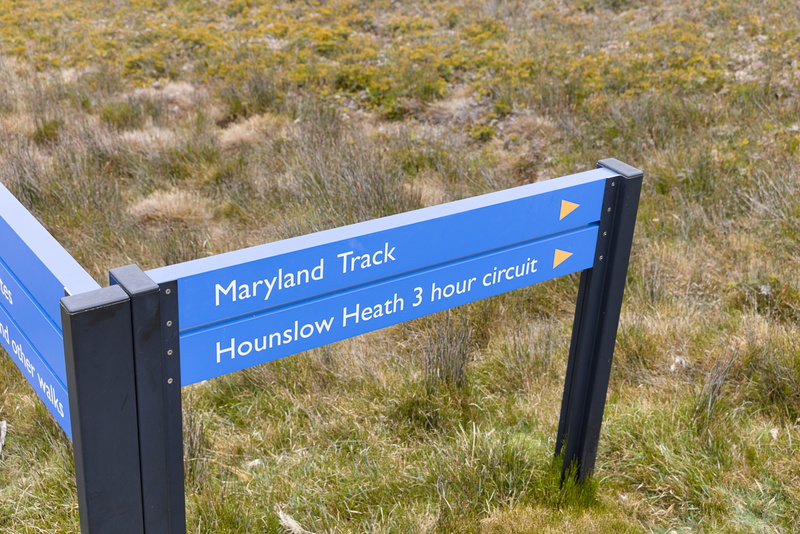
Today, the Hounslow Heath Track, which branches off the Overland Track at pretty much the same point that the Waldheim path does.
Why is it called "Hounslow Heath"? There is actually a nature reserve by that name only a few miles from us back in the UK! Read what Wikipedia has to say:
Hounslow Heath is a local nature reserve in the London Borough of Hounslow and at a point borders Richmond upon Thames. The public open space, which covers 200 acres (80 ha), is all that remains of the historic Hounslow Heath which covered more than 4,000 acres (1,600 ha).Named after that? Could well be.
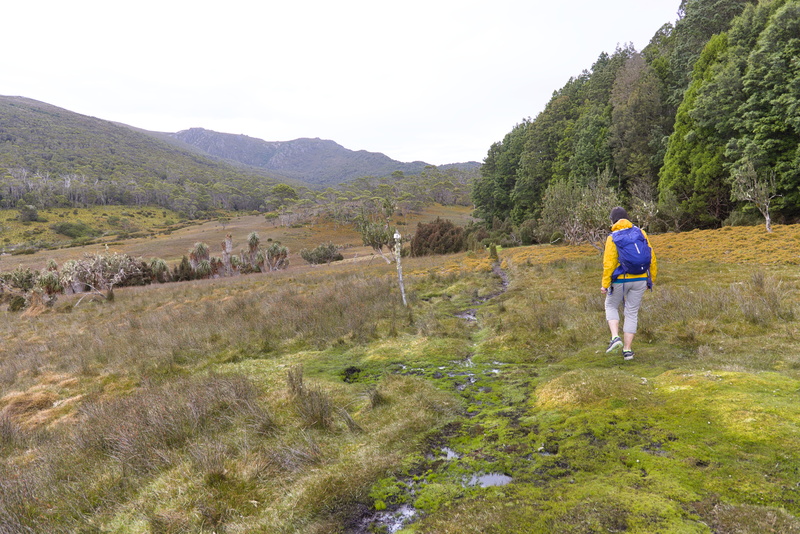
Off we go. The ground is a bit boggy in places even though it's not rained recently.
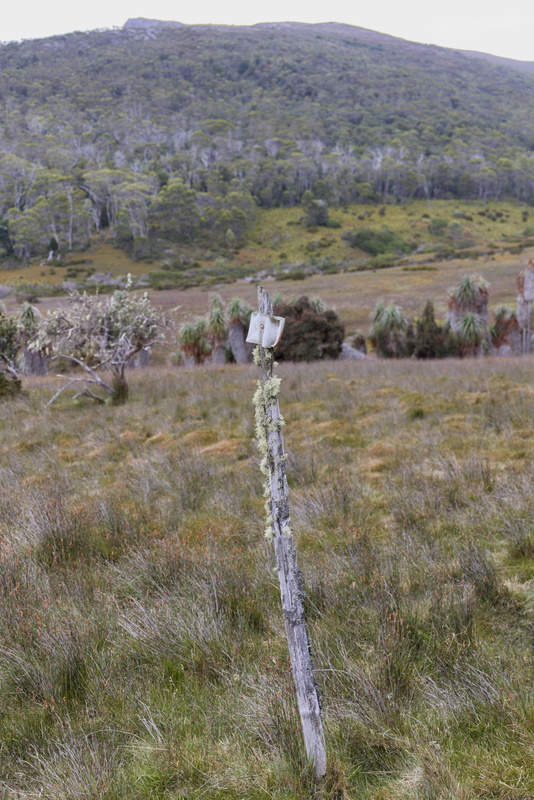
The trail markers aren't always as clear as they might be. This is one of the better ones.
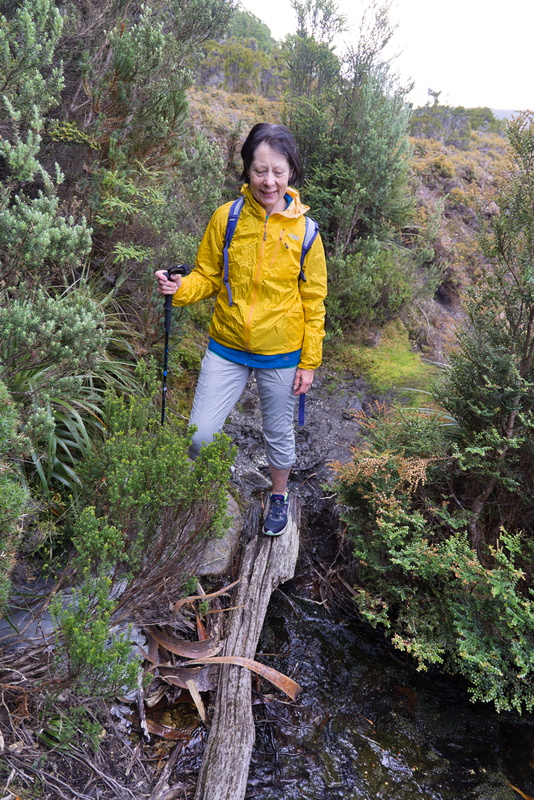
A rather informal log bridge....
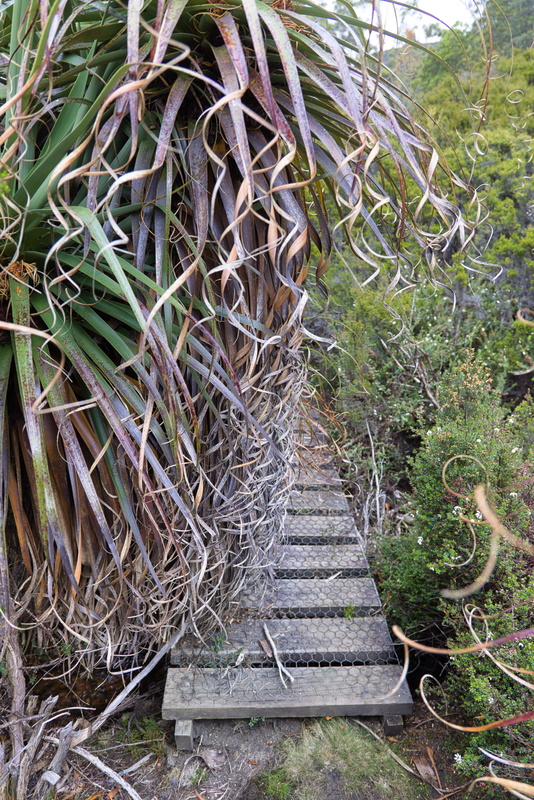
...and a rather more formal one that's still not easy to cross.
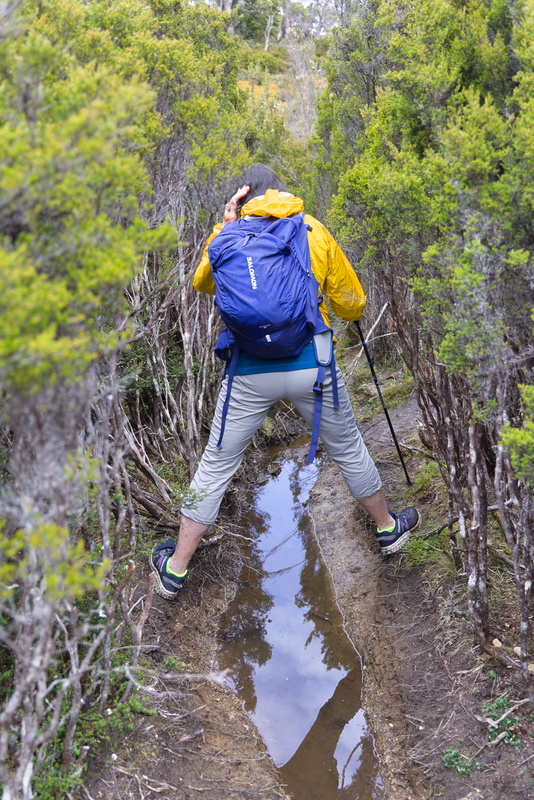
And now we have to follow the stream without wading it. I've got my Gore-Tex trail shoes so I'm better protected but Amanda is just wearing ordinary trainers. None of our other walks have been anything like this, so it's coming as a bit of a surprise.
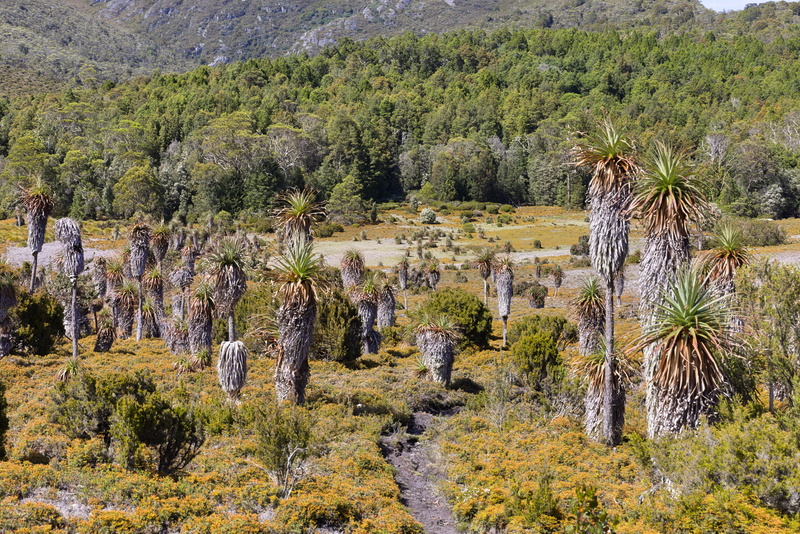
It's worth it for the scenery though.

The water attracts some fine dragonflies.
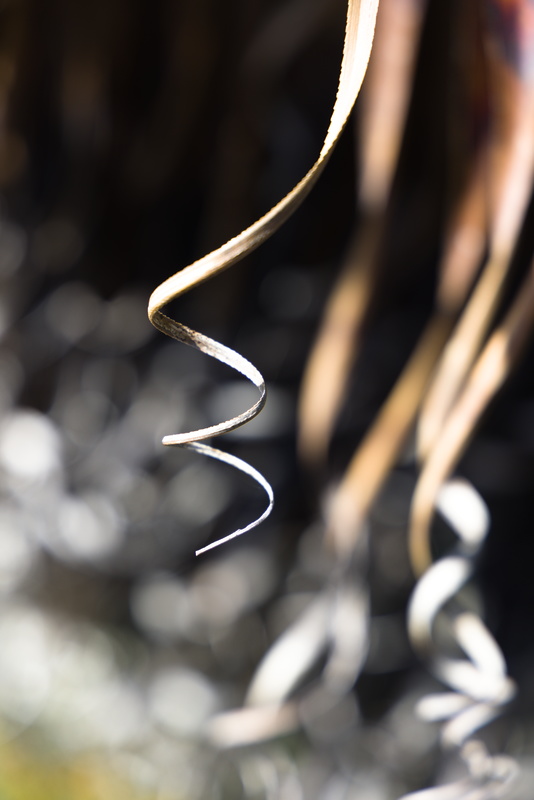
Just an arty-farty little spiral picture.
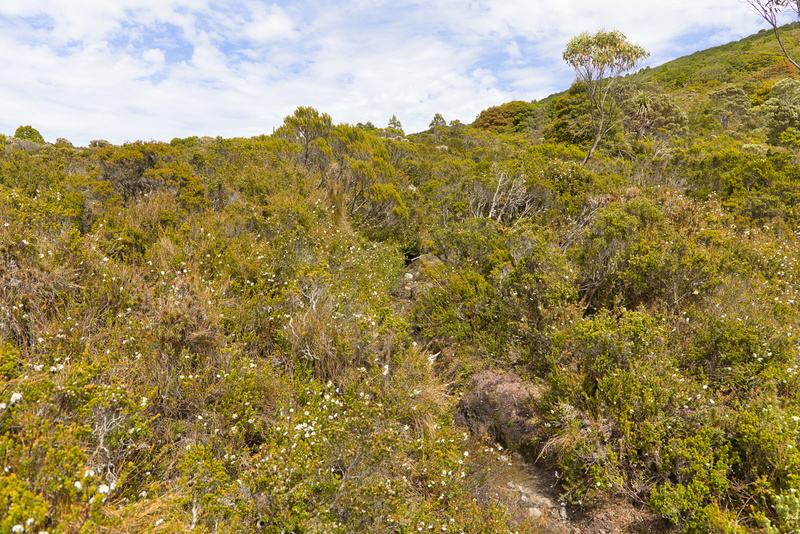
We're climbing to the top of a hill, still following the sometimes elusive markers.
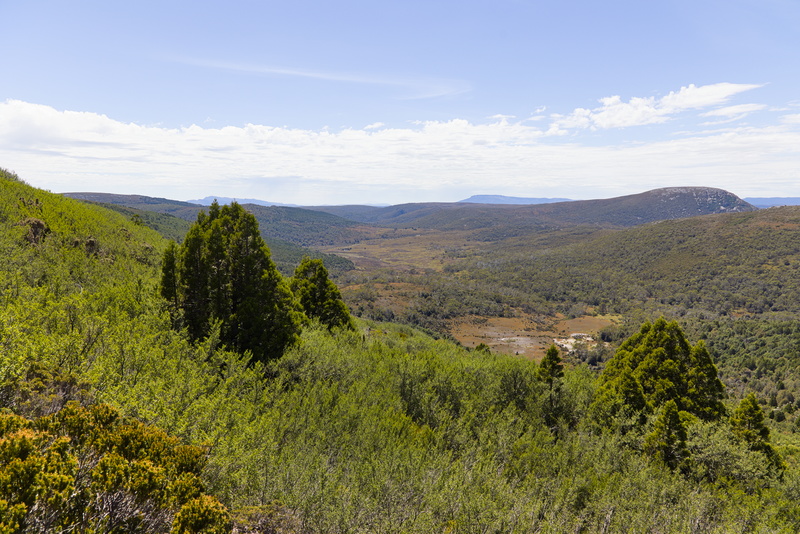
Nearly there, looking back over the landscape with no visible human signs. We've not seen another soul since we left the boardwalk where we started.
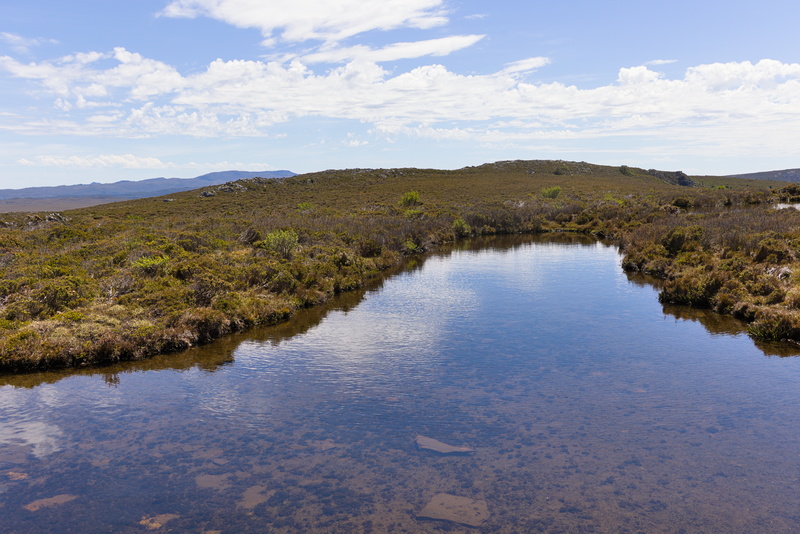
These clear pools must be fed by springs, which explains why our track has been so wet much of the time.
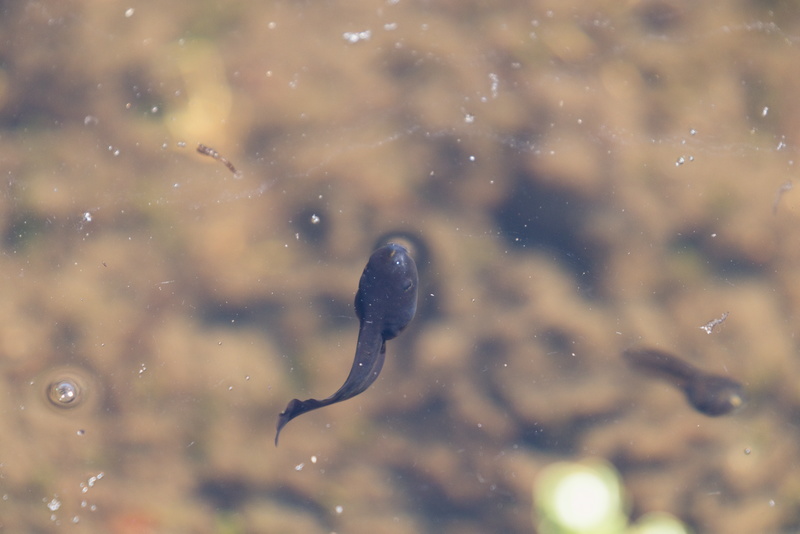
And they're full of tadpoles.
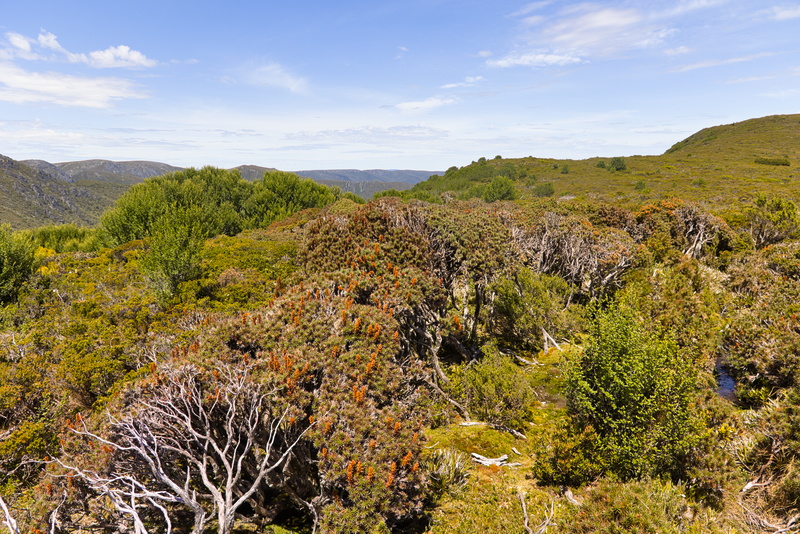
Just beautiful. And all to ourselves (apart from the tadpoles, of course).
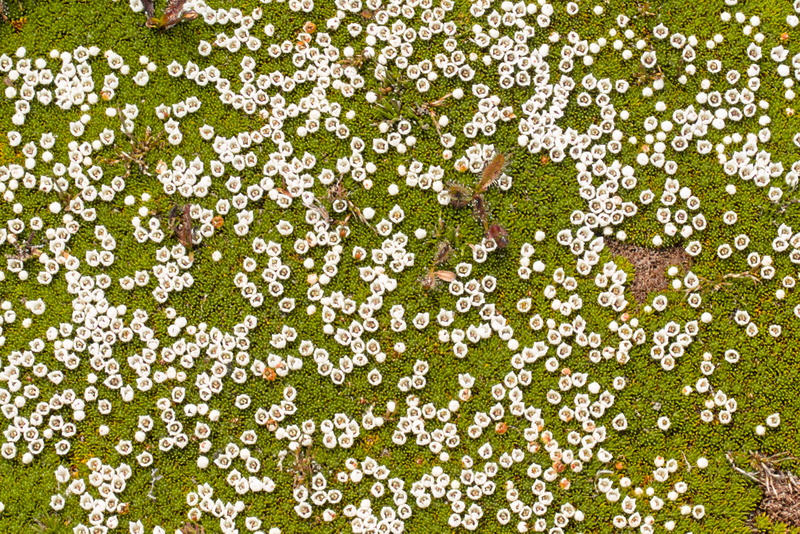
Tiny little white flowers grow in small patches.

This must be the summit.
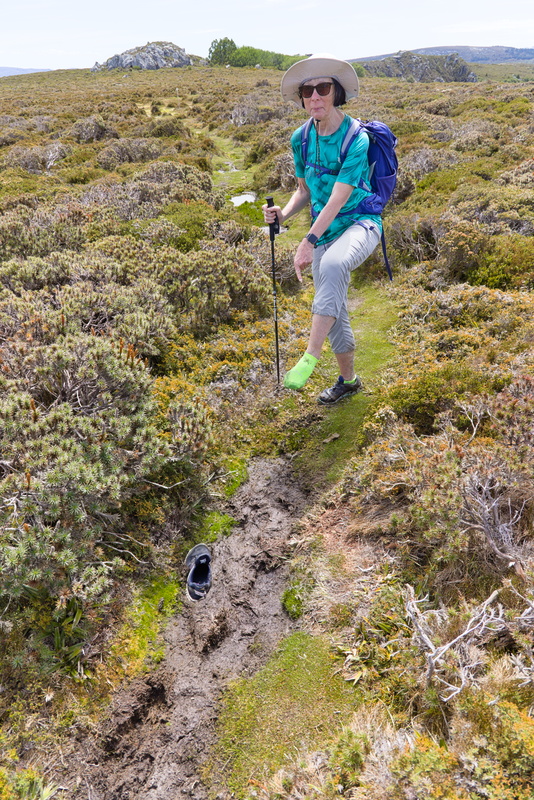
Oops! Amanda has lost a shoe in the boggy ground. I retrieve it for her, but not long after it happens again.
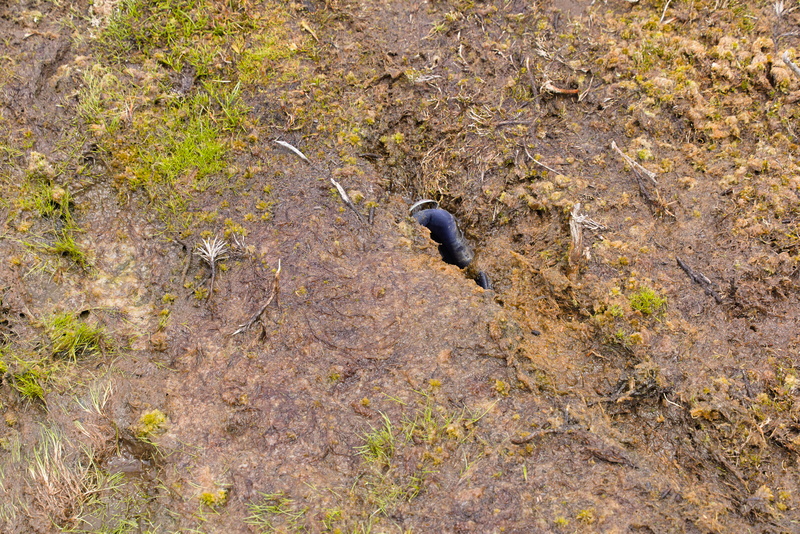
This time it almost disappears without trace!

We're so glad we've done this absolutely stunning trail. Soon we'll start to descend again.
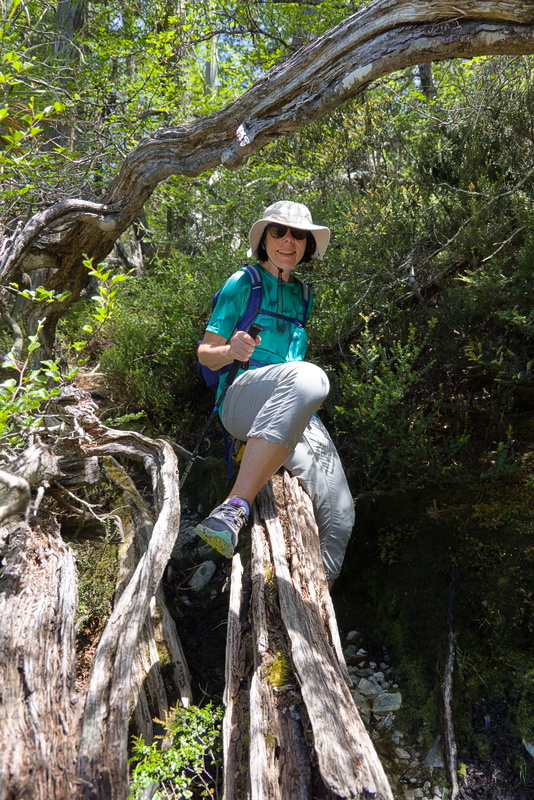
Still a few obstacles to overcome.
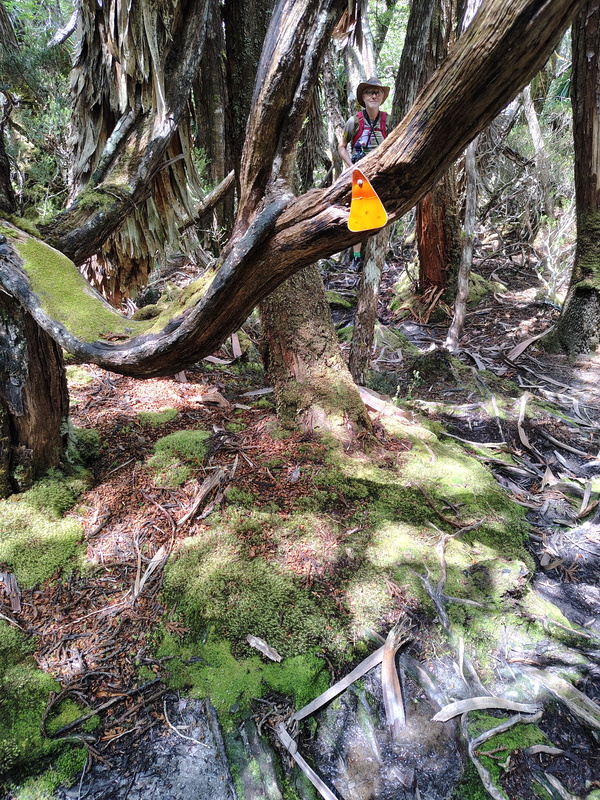
And the markers are still something you have to watch out for.
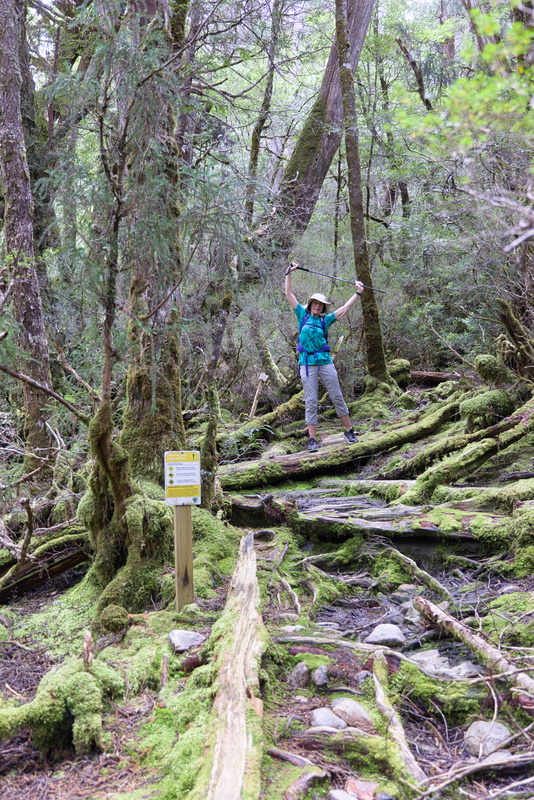
We made it!
Our toughest walk, but I think the one we've enjoyed the most.
Bus back to base for a few hours before we go see the devils. The devils? Ah, yes, 'Devils@Cradle' is, and I quote, "a world class conservation facility dedicated to ensuring the survival of Tasmania’s most unique species" and it's just down the road from us. They have Tasmanian devils and quolls there, although we're not quite sure what quolls are.
The wild populations of Tasmanian Devils have been all but wiped out by a contagious facial cancer called "Devil Facial Tumour Disease". The mode of transmission is not known for certain, but biting when the animals fight seems the most likely route. Quolls are endangered too, though for different reasons.
We've booked the 'After Dark Feeding Tour' for the four of us (although strictly speaking it's only going to be getting towards dusk).
Slightly to my surprise, I don't have any good scene-setting pictures, so we'll just jump straight in.
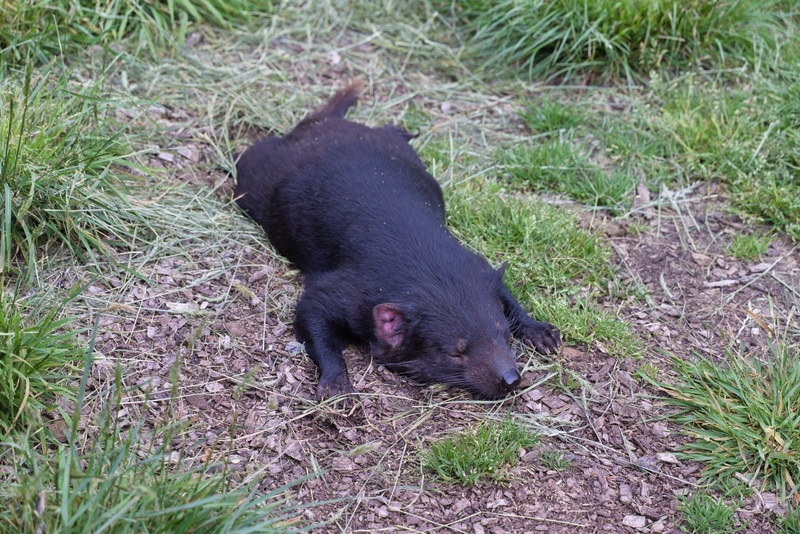
Apparently it's a bit warm for devils, so some of them are a bit soporific.
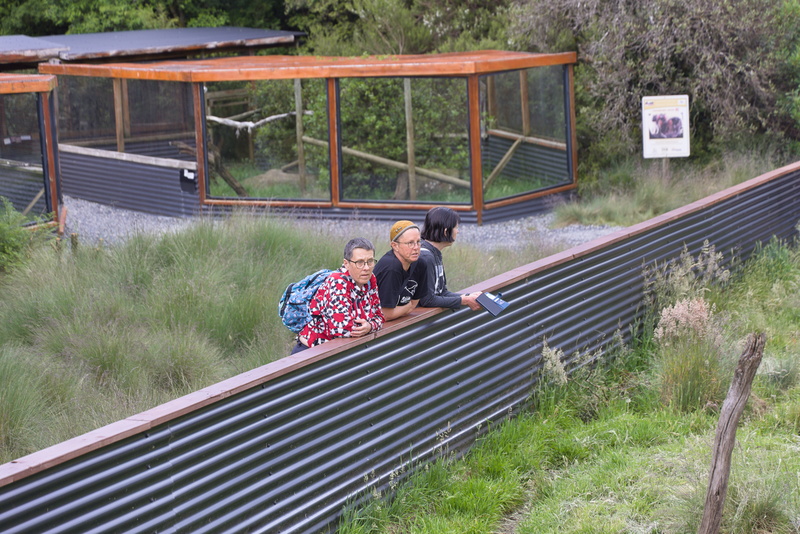
Jo, Meta and Amanda look over the fence into an open enclosure where some of the devils are being a bit more active.
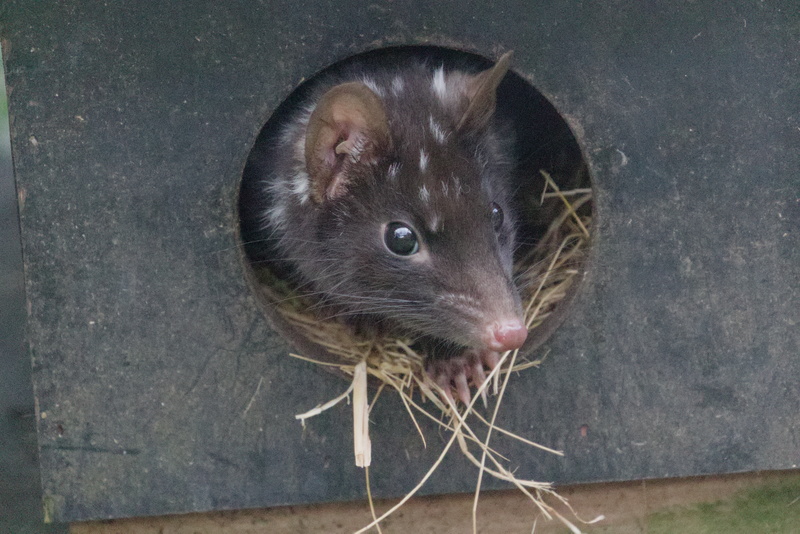
Our first sight of a quoll.
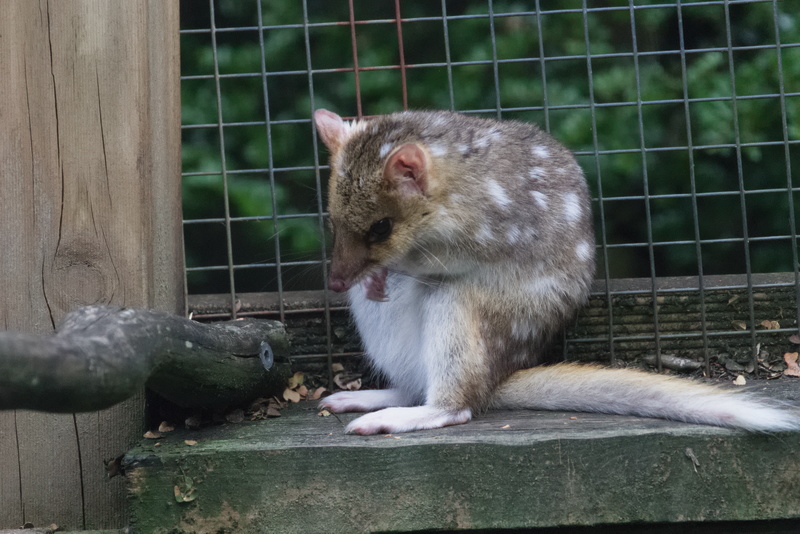
Ah, this one's not so shy. He or she is an Eastern quoll because there are no spots on the tail. If there were spots on the tail, it would be the not-so-cryptically-named Spotted-tail quoll.

This is Pru, one of the rangers, who's going to be leading the tour, telling us about the animals and giving them their meat.
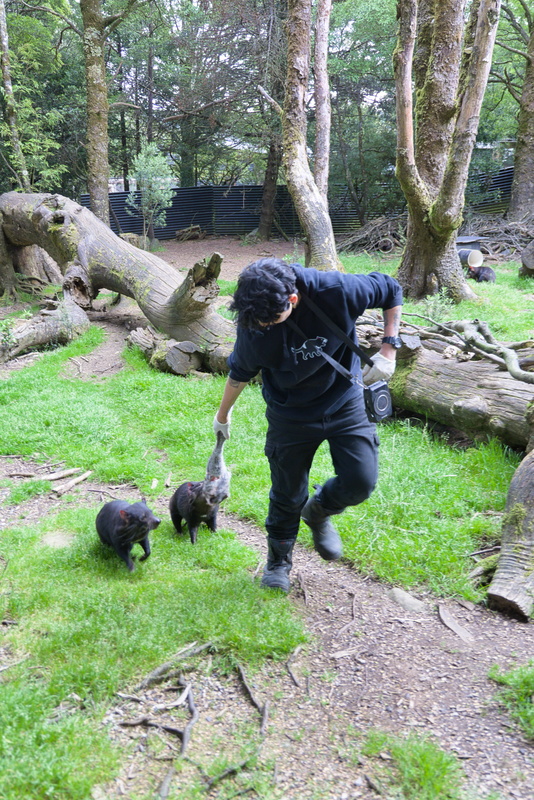
"Come along!"
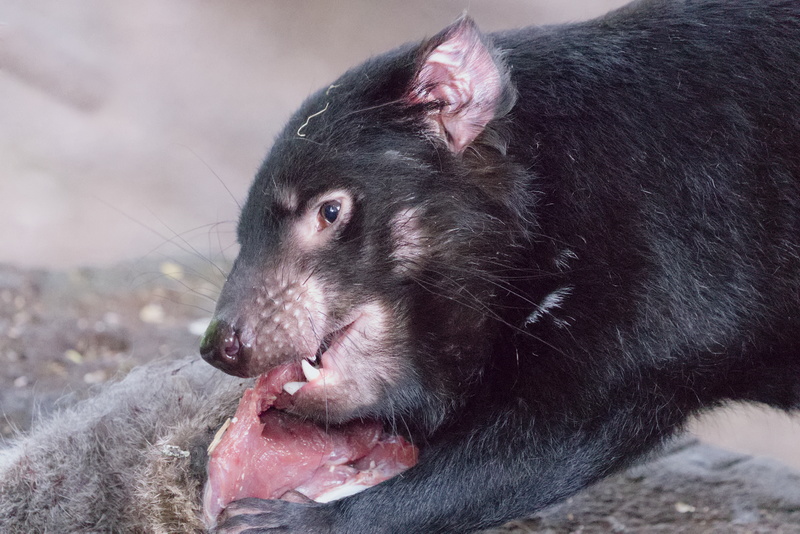
Yum!
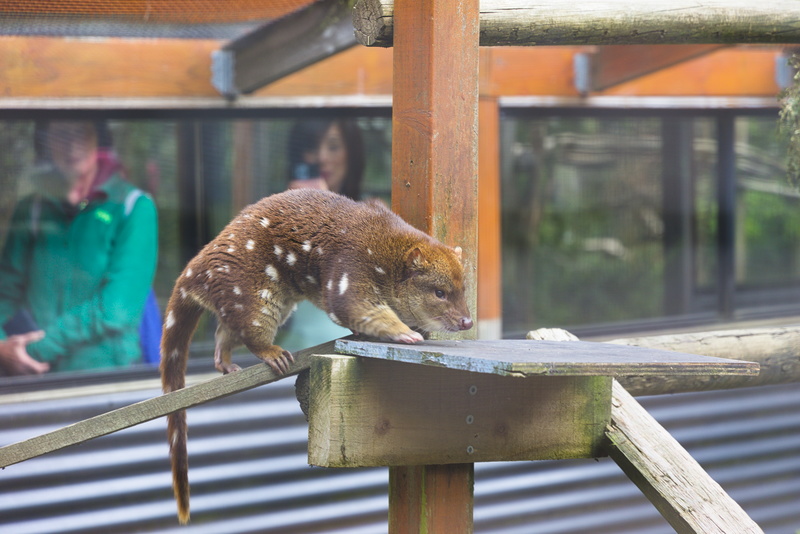
A Spotted-tail quoll.
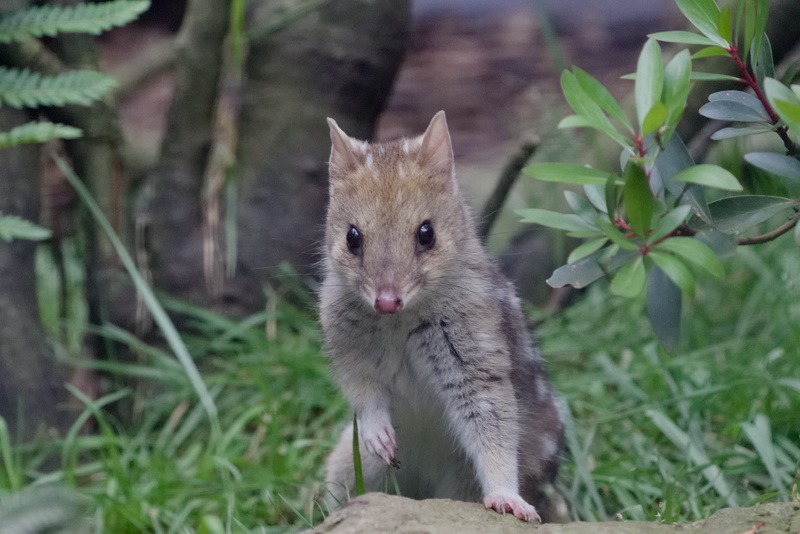
From this angle, it almost looks like a squirrel, though common names for them include "native cat" and "marsupial fox".
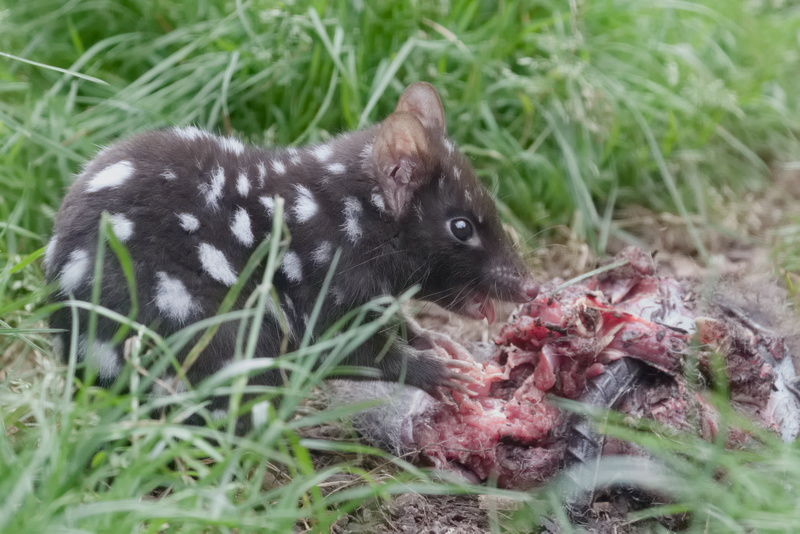
This one is much darker. The Eastern quolls come in two distinct colours, called fawn and black "morphs".
Pru tells us that while the centre is called "Devils@Cradle", they actually focus more on the quolls, which are more highly endangered. The name reflects the fact that everyone's heard of the devils but nobody knows what a quoll is, so why would they come to see them?
Well now we know exactly why: they're dead cute! We're pleased to have seen them.
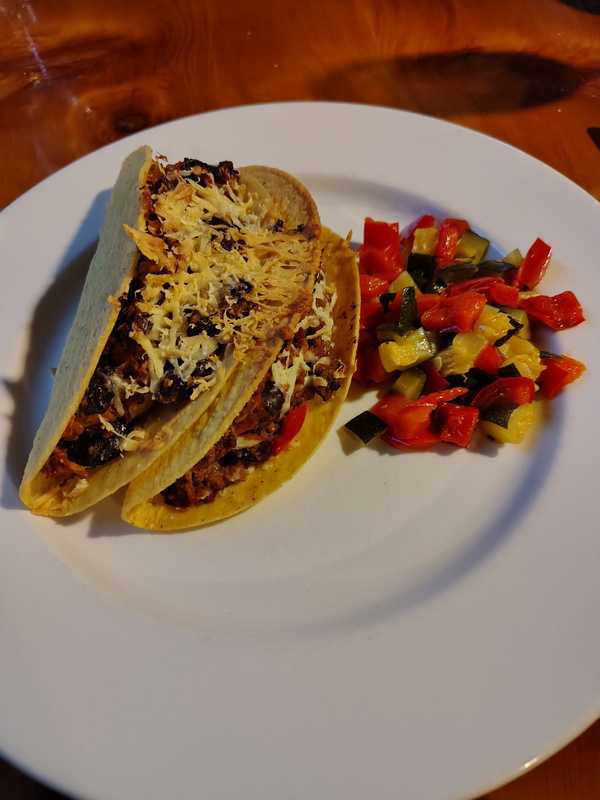
And now it's dinner time for us, but we're a bit too wimpy for raw chunks of meat: tacos with some roast veg will do nicely, thanks.
⬅ previous ⬆intro next ➡